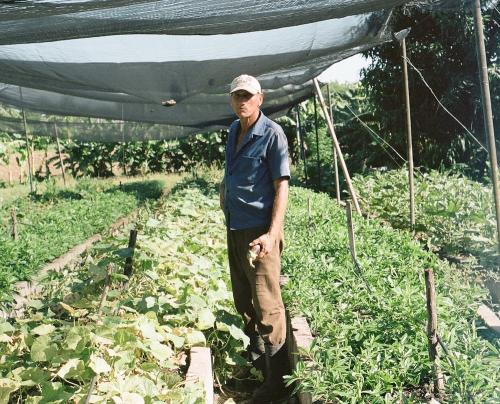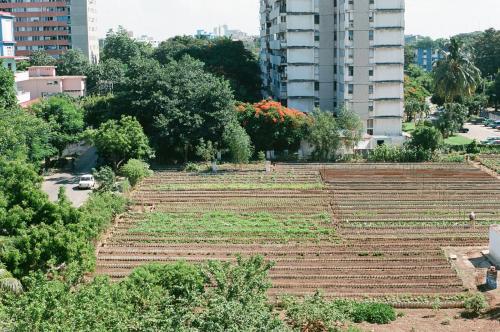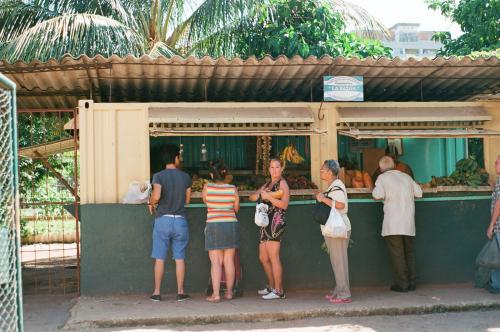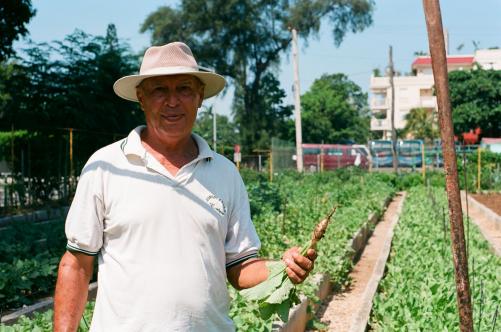
After visiting 21 farms in 4 cities over 30 days, I had an exhausting and exhilarating trip to Cuba. I avoided sunburn, had less luck with mosquitoes, survived a bout of food poisoning in Cienfuegos, rode in many a 1950s collective taxi, and participated in a critical mass bike ride through the streets of Havana. I will continue to untangle and analyze my observations over the coming semester, a task that will involve delving into Cuba’s complex history that is so deeply tied to every aspect of Cuban life today, but a few threads were easily teased out. The photos included are from several of the organoponicos, government regulated urban farms, that I visited. They highlight two trends in urban agriculture’s role within the Cuban food system and urban environment.
The first is the correlation between 1980s Soviet-era housing developments and the presence of organoponicos. In a few cases, plots of land used for construction staging during the 80s were then converted into urban farms in the early 90s during Cuba’s Special Period, a time when the average Cuban diet saw a 30% loss of calories due to the collapse of the Soviet Union and the corresponding loss of imports. This meant that many of the organoponicos I visited were in areas of high population density from surrounding high-rise buildings, placing the farms in walking distance for a large number of people.
Another consistent spatial trend is the attachment of small markets to every organoponico. These markets are within the lot of the farm. Facing the street but set back from the sidewalk, they offer the cheapest option for produce and sell the food grown directly on the farm. Often these markets are informal community spaces, where residents of the surrounding area come to buy fresh produce for their home, casa guests, or paladar. Many locals and farmers spoke about how they love the proximity, assurance of quality, and low price afforded by the food grown on organoponicos. (One farmer told me that agromercados, markets that sell food grown in the countryside, are 5x more expensive, largely due to transportation costs). It appeared to me that the dominant tourist industry, in which Cubans can easily make in one day what other government employees make in a month, drains talent from all other national industry, preventing Cuba from having a booming agriculture sector primarily due to lack of willing labor force. An initial thought is that the urban agriculture initiated during the Special Period persists today through a combination of government support, community dedication, and energy efficiency. I am excited to see what else I find in the coming semester!
This research is also supported by the Hixon Center for Urban Ecology


